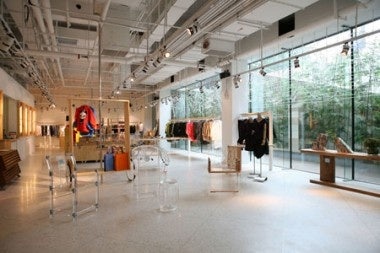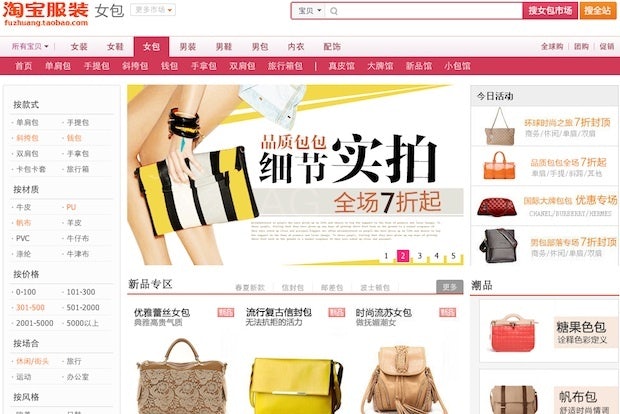Nearly 40 Percent Of China's E-Commerce Market Devoted To Fashion & Accessories#

Though not without its own very particular (and ever-changing) set of challenges, China's booming e-commerce market is convincing some aspiring fashion and luxury retailers to skip brick-and-mortar stores and go online-only. As Jing Daily noted last month, it's been an interesting year for China's burgeoning high-end e-commerce market, amid the earliest signs of an industry shakeout and announcements by the likes of Net-A-Porter and Neiman Marcus, as well as designers like Alexander Wang and -- soon -- brands like J. Crew, that they’re ready to launch e-commerce options in China.
Considering the country’s overall online retail market hit US$121 billion in sales last year, according to Barclays Capital, a 66 percent increase over 2010, and China is expected to become the world’s largest luxury retail as well as luxury e-commerce market by 2015, it’s easy to see why global and home-grown companies continue to pile in. Overall, this year China's luxury e-commerce market is expected to surpass US$3 billion, with some estimates projecting that to expand to 37.24 billion yuan (US$5.9 billion) by 2015.
According to other estimates, China's e-commerce industry is growing between 23 and 38 percent annually, outpacing the growth rate of the country's luxury market (which is expected to grow anywhere from 15-20 percent this year). Roughly 40 percent of that business is devoted to fashion and accessories, led overwhelmingly by younger, white-collar, urban female shoppers.
This week, in her ChinaFile column for Women's Wear Daily, Hong Huang (previously on Jing Daily) takes a look at the opportunity -- and, more importantly, the challenges -- presented to retailers by China's nascent but already crucial e-commerce market:
If [the statistics] do not convince you to skip the brick and use the click to reach your customers in China, let me count the hurdles you have to overcome to open a retail shop.
To start with,
real estate is not cheap in China
, especially in upscale malls. If you find the space, decorating the shop to fit your brand image and the requirements of the fire marshal is another challenge. Oh, you don’t want a sprinkler right in your shop window? That’s going to cost you.
Suppose you survive the fire marshals, then
customs wants to discuss import tax with you
. Good luck arguing with them that your T-shirt is not a luxury item and should not be taxed the 38 percent luxury rate.
Now let’s suppose that you did open the store and your merchandise passed the customs inspection just fine. Let’s talk about
hiring employees
. First of all, benefits are a whopping 46 percent of salary, and you, as the employer, have to pay it all. The legally allowed “trainee” period is two months and after that they are your official employees. Once there is a contract, there is virtually no way you can fire an employee, short of him or her getting arrested and jailed. After three years, even if you do not renew their employment contract, you have to pay a severance.
I can go on and on —
how expensive it is to hire a proper PR company to do your parties
; how impossible it is to calculate your cpm (cost per mille, or thousand views) on your advertising; how incredibly difficult to keep your staff even though you cannot fire them. The list is infinite. And if you find someone to open stores for you, how sure are you that the brand image is strictly followed and there are no fakes mixed in with the real merchandise?

Along with greater overall control and lower costs, Hong notes that e-commerce allows a retailer to choose their own entry and marketing strategy in China, yet points out that here too are questions to be answered: Do you simply add a Chinese-language version and shipping to China to your e-commerce platform? A China-specific site? And once you've launched, how do you market your site and, more critically, instill trust in your buyers to convince them of the quality and authenticity of what you're selling? All important questions, but now -- for smaller brands and independent designers -- perhaps the more important question is: is brick-and-mortar an unnecessary investment?
